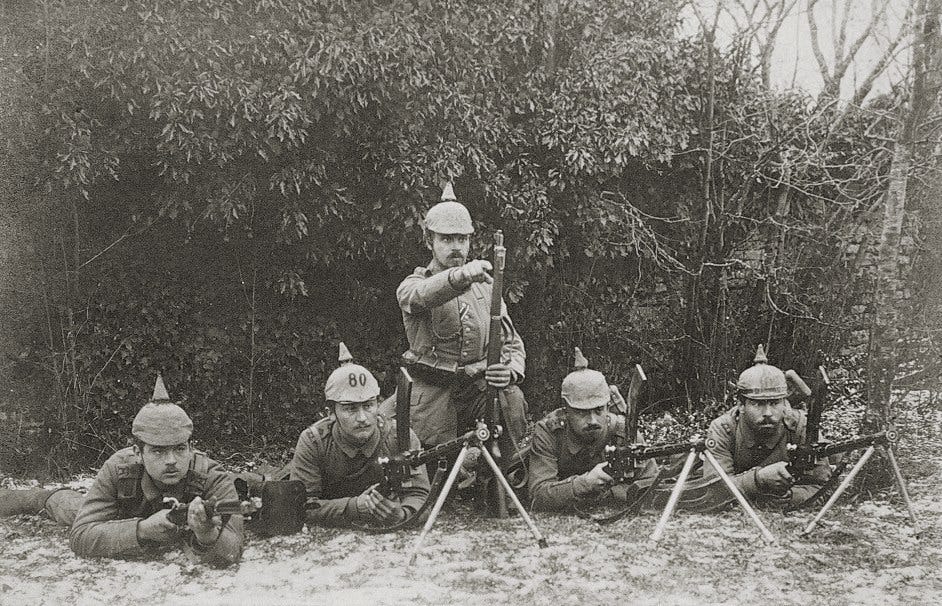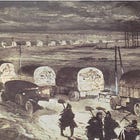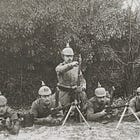Raising the Musketen Battalions
Musketen Battalions of the Prussian Army (1915-1917)

This post is the first of a series of articles on the subject of units armed with Madsen guns. Links to other posts in this series can be found on the aggregator at the bottom of the page.
The Tactical Notebook published the first version of this article in December of 2023. In June of 2024, the discovery of a document that shed much new light on the subject of the Madsen gun in German service led to a major revision of the piece.
In the summer of 1915, the German Empire found itself in possession of several hundred Madsen light machine guns. Officially designated as weapons captured from the Russian Army, nearly all of these Madsen guns seem to have found their way to Germany by means of an even more circuitous route.1
The bipod-mounted Madsen fed from a magazine and cooled its barrel with air. It thus lacked the capacity for sustained fire that defined the belt-fed, sled-mounted, water-cooled Maxim guns of the armies of the German Empire. At the same time, the Madsen gun, which weighed but 10 kilograms (about 22 pounds), was much more portable than the German version of Sir Hiram’s machine gun, which tilted the scales at more than 60 kilograms (132 pounds.)2
On 10 August 1915, the Prussian War Ministry instructed the XVIII. Corps District to form two battalions armed with Madsen guns. The first of these, to be known as the 1st Musketen Battalion, rated a small headquarters and three line companies. The second, the 2nd Musketen Battalion, was to consist of a headquarters and two companies. (The use of the term Muskete to describe the Madsen gun seems to reflect the old Prussian distinction between the heavier large-caliber flintlocks carried by Musketiere of line infantry battalions and the lighter shoulder arms wielded by the men of Füsilier battalions.)
Soon after the signing of this order, the ‘battle-tested’ [Kampferprobte] men assigned to the Musketen battalions reported to barracks in the city of Mainz, where ordnance experts from the Rifle Testing Commission taught them how to feed, fire, and care for the new weapon. Other specialists taught the members of these new units such arts as the throwing hand grenades and wearing of various kinds of gas masks.
The letter that ordered the raising of the new units described their purpose. The Musketen battalions, it explained, served to ‘strengthen infantry firepower, especially when repelling attacks against threatened points’. In addition, the order made clear that the Musketen battalions were to be held in reserve until they were needed to perform this duty, at which time trucks would transport them to an assembly area near the ‘threatened point’.
Source: Prussian War Ministry, letter of 10 August 1915, preserved in Folder PH 3/1237 at the German Federal Archives [Bundesarchiv]. For a stand-alone copy of the document, please visit this page at the Military Learning Library.)
To Share, Support, or Subscribe:
For Further Reading:
For a short account of the round-about route taken by some (if not most) of Madsen guns that ended up in Germany, see The Strange Case of the Bulgarian Madsen on the (reliably splendid) website, Bulgarian Artillery.
For a delightfully detailed description of the Madsen gun, see this page on Forgotten Weapons.




